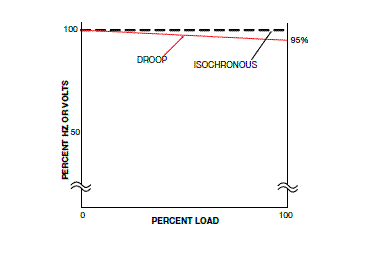It seems you face to problem for good paralleling two mentioned gensets and suitable load (KVAR) sharing, For general guidance you can refer to manufacturer recommendation, I rewrite some technical topic in this regard by using one of Cummins Co. white paper. In a paralleled arrangement, the voltage and frequency outputs of the generator sets are forced to exactly the same values when they are connected to the same bus. Consequently, generator set control systems cannot simply monitor bus voltage and speed as a reference for maintaining equal output levels. If, for example, one set operates at a higher excitation level than the other sets, the reactive load will not be shared equally. Similarly, if a generator set is regulated to a different speed than the others, it will not share kW load properly with other generator sets in the system. Each generator set in the system has two active control systems always in operation: the excitation control system regulating voltage and the fuel control system regulating engine speed. Generators can be sharing kW load and have problems sharing kVAR load, and vice versa. So real power sharing (expressed as kW) depends on speed matching between the generator sets and fuel rate control; reactive power (expressed as kVAR) is primarily dependent upon voltage matching and excitation system control between the generator sets. Although it is sometimes possible to integrate systems of different manufacturers, generator set governors and load sharing controls should be of the same manufacturer to avoid conflicts in responsibility for proper system operation. Several types of load sharing control are available: -Droop governing and voltage regulation (reactive droop compensation) -Isochronous kW load sharing -Cross current compensation for kVAR load sharing -Isochronous Voltage kVAR load sharing Droop load sharing Droop governing and voltage regulation systems have been historically used for isolated bus paralleling, because they allow proper load sharing between any two or more generators operating on an isolated bus, as long as the generators can be set up to droop frequency and voltage at the same rate, and can be controlled to stable frequency and voltage values. As illustrated in Figure below, droop governing or voltage regulation allows the engine speed (measured in Hz) or alternator voltage to decline by a predetermined percentage (typically 3%) of the output range as load increases. Identical speed and voltage drops result in equal load sharing between paralleled generator sets.  The same practices as described here can be applied to the voltage regulation system of the generator sets in a system. Var load sharing via droop is often termed
The same practices as described here can be applied to the voltage regulation system of the generator sets in a system. Var load sharing via droop is often termed
